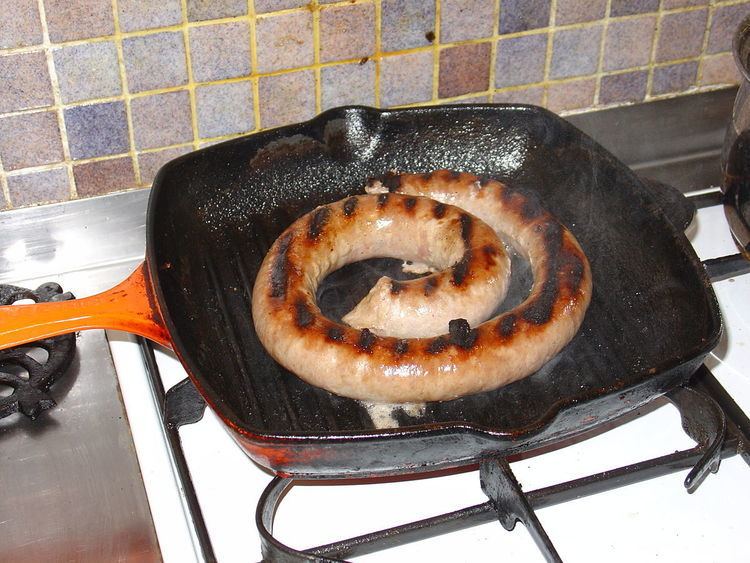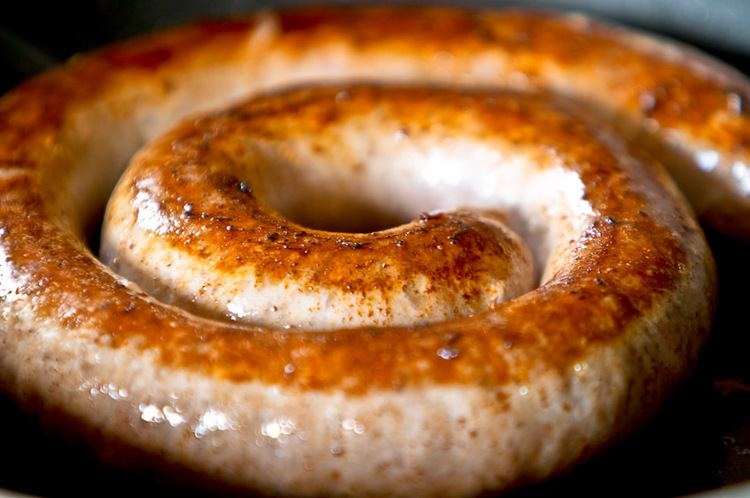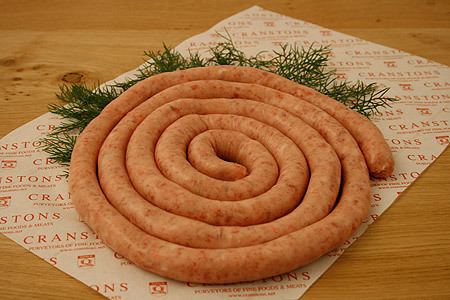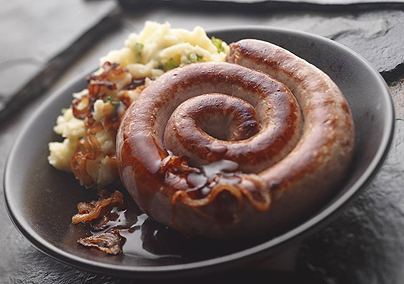Similar Lincolnshire sausage, Bangers and mash, Onion gravy, Black pudding, Chipolata | ||
How to make sausage cumberland sausages thescottreaproject
Cumberland sausage is a form of sausage that originated in the ancient county of Cumberland, England, now part of Cumbria. They are traditionally very long, up to 21 inches (50 cm), and sold rolled in a flat, circular coil, but within western Cumbria they are more often served in long curved lengths. Sometimes they are made shorter, like ordinary British sausages, and sometimes they are coated in breadcrumbs.
Contents
- How to make sausage cumberland sausages thescottreaproject
- Cumberland sausage
- Naming origin
- History
- Ingredients
- Protected Geographical Status
- References

The meat is pork, and seasonings are prepared from a variety of spices and herbs, though the flavour palate is commonly dominated by pepper, both black and white, in contrast to the more herb-dominated flavours of sausage varieties such as those from Lincolnshire. There are traditionally no colourings or preservatives added. The distinctive feature is that the meat is chopped, not minced, giving the sausage a chunky, meaty texture.

In March 2011, the "Traditional Cumberland sausage" was granted Protected Geographical Indication (PGI) status.
Cumberland sausage
Naming origin

Up until the 1950s, most farms and many households kept a pig as part of their regular husbandry and means of self-sufficiency. Over time a local variety of pig was bred that was suited to the cooler and wetter climate in Cumberland. It was known as the Cumberland Pig, and this is where the product takes its name from. The Cumberland pig was a heavy pig with an upturned snout and ears that flopped forwards. Its meat had a distinctive quality and flavour that was unique. Heavy boned, slow to mature, and extremely hardy, the creature became a symbol of the region, but was allowed to die out in the early 1960s at Bothel. As an alternative, Large Black, Gloucestershire Old Spots and Welsh breeds can be used. The Cumberland pig breed has now been revived, although not officially recognised by the Rare Breeds Survival Trust.
History

The Cumberland sausage has been a local speciality in the area for around 500 years. It is not known how the Cumberland sausage came to acquire its special shape and taste. Historically, the sausage was more highly seasoned than it is today. This is largely attributed to the influx of spices into Whitehaven during the 18th century. During this time Cumbria was introduced to ginger, black pepper and nutmeg, as well as other foodstuffs such as molasses, sugar and rum. Many of these ingredients have been incorporated into some of Cumbria's local specialities, such as the spicy Cumberland Sausage.
Ingredients
Most sausages are divided into links but the Cumberland sausage is one continuous rope-like coil. The sausage is typically filled with coarsely chopped pork and black pepper, and sometimes other ingredients such as herbs and other spices. The meat content is usually 85% - 98%. However, the popularity of the Cumberland sausage has become so widespread in recent years that many large food producers started to mass-produce it and sacrificed its original quality with a meat content as low as 45%, containing emulsified rather than coarse-cut meat and being sold in thin links rather than thick continuous lengths.
Protected Geographical Status
There was a campaign by some Cumbrian butchers and meat manufacturers to have Cumberland sausage placed under a Protected Geographical Status classification under European Commission rules. This would provide the same protection as is afforded to Parma ham and Feta cheese. The association suggested that the criteria for the sausages should include: a high meat content of more than 80%; the sausage to be coiled, not linked; a wider diameter than conventional sausages; and a rough-cut texture. The association claims the sausage should be prepared in Cumbria. While individual butchers have their own recipes, they are generally more highly seasoned than traditional sausages, possibly due to the historical import of spices at Whitehaven.
There was, however, opposition to the campaign in its present form, which essentially calls for the modification of the proposition to reduce the region of the proposed protection from the Post 1974 'administrative' County of Cumbria - which incorporates Cumberland, Westmorland, and Lancashire 'north of the Sands' but without abolishing the original counties - to the Traditional County of Cumberland, on native grounds, with provisions including the native right for natives to continue to manufacture the sausage elsewhere.
In March 2011, Protected Geographical Indication (PGI) status was granted to the name "Traditional Cumberland sausage". To display the PGI mark, the sausage must be produced, processed and prepared in Cumbria and have a meat content of at least 80%. It must include seasoning and be sold in a long coil.
